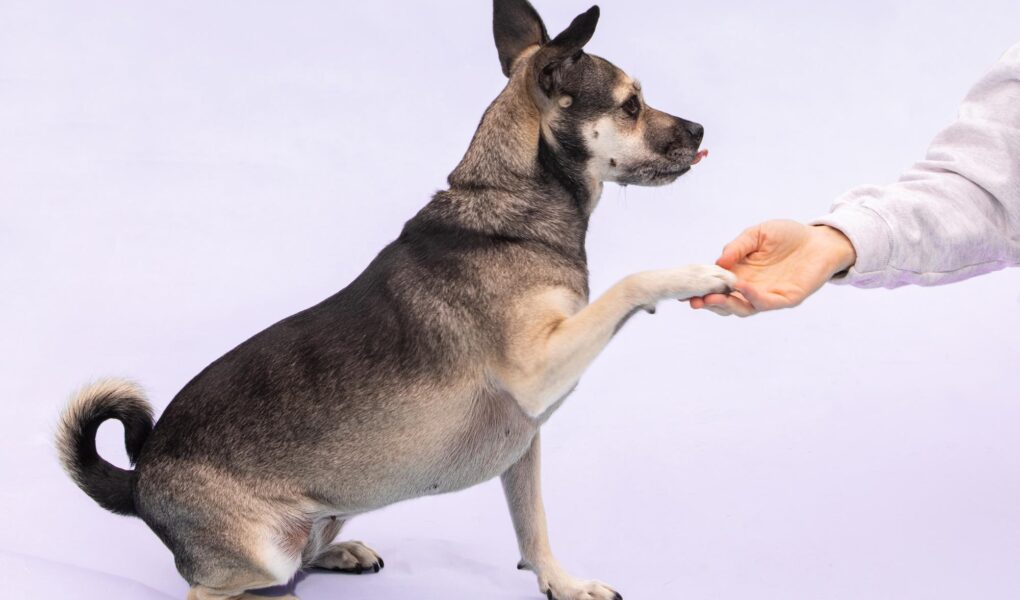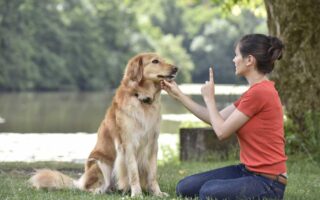Dog Training 101: Unlocking the Secrets to a Harmonious Partnership
Bringing a dog into your home is like writing a new chapter in your life—one filled with joy, laughter, and the occasional challenge. As eager tails wag and curious noses nudge their way into our hearts, the journey of dog ownership begins. However, this journey requires more than just love; it calls for understanding, patience, and a sprinkle of know-how. Enter the world of dog training, where the language of barks and tail wags transforms into a dialogue of mutual respect and teamwork. In this article, we’ll delve into the essentials of dog training, unraveling the principles and techniques that lay the foundation for a well-behaved canine companion. Whether you’re a new puppy parent or looking to refine your dog’s skills, the insights shared here will guide you through the rewarding experience of shaping behavior, fostering trust, and ultimately, strengthening the bond between you and your furry friend. Join us as we embark on this educational expedition—Dog Training 101 awaits!
Table of Contents
- Understanding Canine Behavior as the Foundation of Training
- Essential Commands Every Dog Should Master
- Positive Reinforcement Techniques for Successful Training
- Common Mistakes and How to Avoid Them in Dog Training
- Q&A
- Closing Remarks
Understanding Canine Behavior as the Foundation of Training
To effectively train a dog, it is essential to delve into the intricacies of canine behavior. Dogs communicate primarily through body language, vocalizations, and social interactions. By observing these cues, trainers can tailor their approaches to suit individual temperaments and learning styles. Recognizing the significance of stress signals or signs of excitement enables trainers to create a conducive environment for learning. This understanding allows for positive reinforcement strategies that align with the dog’s natural tendencies, making the training process not just effective but also enjoyable for both the trainer and the pet.
Additionally, building a strong bond based on trust and respect plays a crucial role in training success. A dog’s motivation often stems from their desire to please their owner, making it vital for trainers to establish themselves as reliable leaders. Key aspects to consider include:
- Consistency: Providing uniform commands and expectations.
- Patience: Allowing the dog to learn at their own pace.
- Positive Reinforcement: Utilizing treats and praise to encourage desired behaviors.
This foundational knowledge empowers trainers to connect more meaningfully with their dogs, turning training into a rewarding experience that fosters lifelong companionship.
Essential Commands Every Dog Should Master
Training your dog not only fosters better communication but also strengthens the bond you share. Here are some essential commands that every dog should master to ensure their safety and enhance their social skills:
- Sit: A foundational command that encourages calm behavior and can be used before meals or outings.
- Stay: Vital for keeping your pet in one place, especially in potentially dangerous situations.
- Come: This command is crucial for your dog’s safety, ensuring they return to you when called.
- Down: Promotes relaxation and is helpful in various situations, such as during greetings.
- Leave it: Teaches your dog to ignore distractions, which is essential for preventing them from picking up harmful objects.
To track your dog’s progress, consider using a simple table to summarize their learning milestones:
| Command | Progress Level | Date Learned |
|---|---|---|
| Sit | Mastered | January 15, 2023 |
| Stay | In Progress | February 3, 2023 |
| Come | Mastered | January 22, 2023 |
| Down | Not Started | N/A |
| Leave it | In Progress | February 10, 2023 |
Positive Reinforcement Techniques for Successful Training
When it comes to effective dog training, utilizing positive reinforcement methods can make all the difference. This approach focuses on rewarding desirable behaviors, which not only encourages your dog to repeat these actions but also strengthens the bond between you and your furry friend. Some effective methods of positive reinforcement include:
- Verbal Praise: Using an enthusiastic tone to commend your dog when they successfully follow a command.
- Treat Rewards: Offering a small, tasty treat as an incentive for good behavior.
- Playtime: Engaging your dog in their favorite game as a reward after a successful training session.
- Affection: Providing gentle pats or belly rubs to convey appreciation when your dog performs well.
Implementing these techniques in your training sessions helps create a positive learning environment. It’s crucial to be consistent and immediate with your rewards to reinforce the correct behaviors effectively. Below is a simple table highlighting the frequency of rewards when training different behaviors:
| Behavior | Reward Frequency |
|---|---|
| Sit | Immediately upon command |
| Stay | Every 5 seconds of compliance |
| Come | As soon as they reach you |
| Heel | Every minute of walking properly |
By understanding and applying these positive reinforcement techniques, you’ll be well on your way to successful training sessions that lead to a happy, well-behaved dog.
Common Mistakes and How to Avoid Them in Dog Training
While training your dog can be a rewarding experience, it’s essential to recognize some common pitfalls that can hinder progress. One frequent mistake is inconsistency in commands and expectations. When family members use different words or gestures for the same behavior, it confuses the dog and frustrates training efforts. To prevent this, establish a set of clear commands and consistently use them throughout your household. Another error is neglecting socialization. Failing to expose your dog to various people, animals, and environments can lead to anxiety and behavioral issues later on. Regular socialization is crucial for developing a well-rounded pooch.
Moreover, many trainers overlook the importance of patience. Dogs, much like humans, require time to learn and adapt to new skills. Rushing through training sessions or expecting immediate results can set you and your pet up for disappointment. Aim for short, positive sessions that keep your dog engaged and eager to learn. Additionally, relying solely on punitive measures can be detrimental; instead, consider using positive reinforcement methods to encourage good behavior. This approach fosters a loving bond between you and your dog while making the training process enjoyable.
Q&A
Q&A: Dog Training 101
Q: What is the first step to effectively train my dog?
A: The journey to a well-trained dog begins with building a strong bond of trust and understanding. Start by establishing a consistent routine for feeding, walking, and playtime. This helps your dog learn to rely on you, setting the stage for successful training.
Q: How can I motivate my dog to learn?
A: Every pup is different, but most dogs respond wonderfully to positive reinforcement. Use treats, praise, and toys as rewards for desired behaviors. The key is to make training sessions enjoyable and uplifting, so your dog learns that following your commands is a rewarding experience.
Q: What are some basic commands every dog should know?
A: Focus on teaching essential commands like “sit,” “stay,” “come,” and “down.” These foundational commands not only improve communication between you and your furry friend but also enhance their safety in various situations.
Q: How long should training sessions be?
A: Keep training sessions short and sweet—around 5 to 15 minutes, two to three times a day is ideal. Dogs, especially puppies, have limited attention spans. By keeping sessions brief, you can maintain their focus and enthusiasm.
Q: What should I do if my dog doesn’t seem to be learning?
A: Patience is key! If your dog seems unresponsive, consider revisiting your approach. Try different training techniques, adjust reward methods, or even change the environment to minimize distractions. Remember, learning takes time, and every dog progresses at their own pace.
Q: How do I address behavioral issues, such as jumping or barking?
A: For behaviors like jumping or excessive barking, it’s crucial to identify the triggers. Redirect your dog’s attention and offer alternatives—like a sit-stay command when greeting visitors. Consistency is paramount; training should be ongoing to reinforce desired behaviors over time.
Q: Should I enroll my dog in a training class?
A: If you’re feeling overwhelmed or want to enhance your dog’s socialization skills, professional training classes can be extremely beneficial. A skilled trainer can provide valuable insights and structure, and the group setting can help your dog learn to interact with others positively.
Q: How can I ensure training is a positive experience for my dog?
A: Incorporate fun into training! Use games, take breaks, and vary your commands to keep your dog engaged. Also, end each session on a high note, perhaps with a favorite game or cuddle time, to create a lasting positive association with training.
Q: Are there resources I can turn to for more information?
A: Absolutely! Numerous books, online courses, and reputable websites dedicated to canine training can provide valuable insights. Joining local dog-training groups or online forums can also connect you with fellow dog owners, offering support and shared experiences.
Q: When can I expect to see results from training?
A: The timeline for training can vary widely depending on your dog’s age, temperament, and the consistency of your efforts. Some dogs may pick up commands quickly, while others might take longer. Celebrate the small victories along the way, as they add up to significant progress!
As you embark on this rewarding adventure of dog training, remember that patience, love, and consistency will yield the best results for you and your furry companion. Happy training!
Closing Remarks
As we conclude our journey through Dog Training 101, it’s clear that the path to a well-behaved pup is paved with patience, consistency, and a sprinkle of creativity. Remember, every dog is unique, bringing its own personality and quirks to the training table. Embrace these differences, and let them guide your approach—what works for one furry friend may not resonate with another.
Training is not just about commands; it’s an opportunity to strengthen the bond between you and your canine companion. So take the skills you’ve learned, engage in regular practice, and celebrate the small victories along the way.
Ultimately, the world of dog training is an ongoing adventure—one that can be as rewarding as it is challenging. Equip yourself with knowledge, remain adaptable, and, most importantly, enjoy each moment spent with your loyal friend. Happy training!



